
 |
Eager Space | Videos by Alpha | Videos by Date | All Video Text | Support | Community | About |
|---|

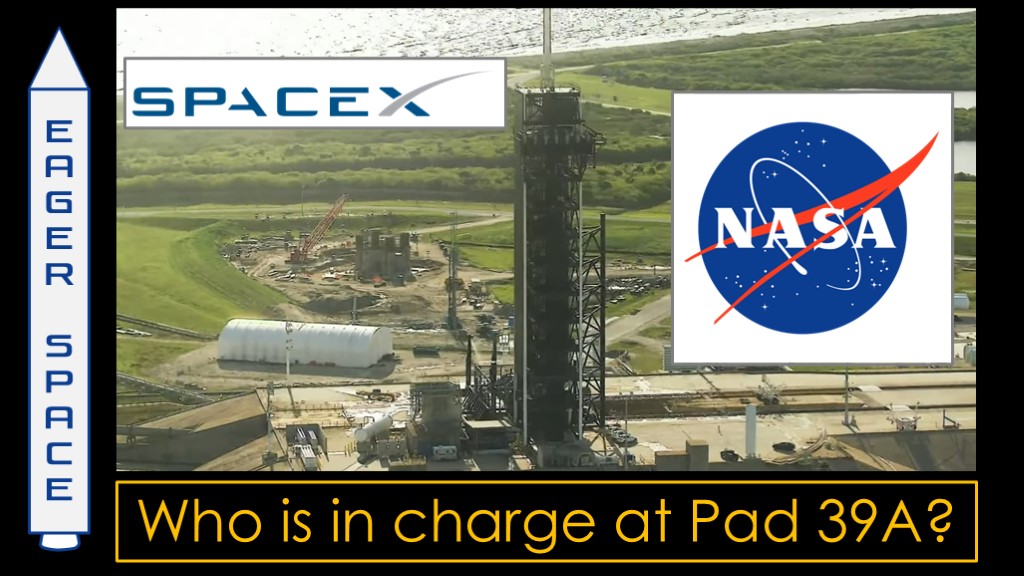
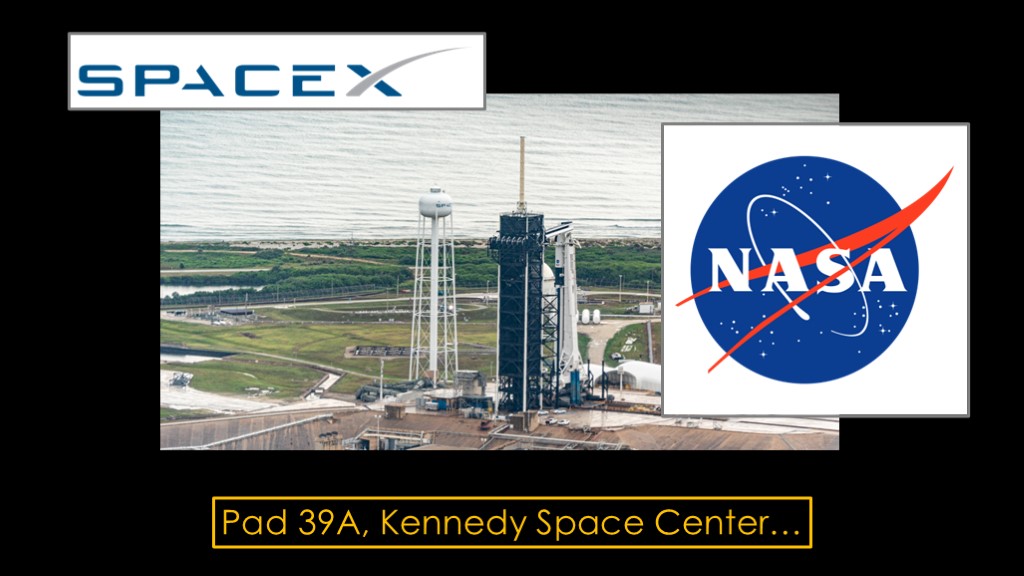
Pad 39A at Kennedy Space Center was built for Apollo, heavily used by the shuttle program, and then leased to SpaceX for their exclusive use in 2014.
The relationship between SpaceX and NASA has been good. SpaceX launches crew dragon missions from this pad, and this is currently the only pad where SpaceX can launch those missions.
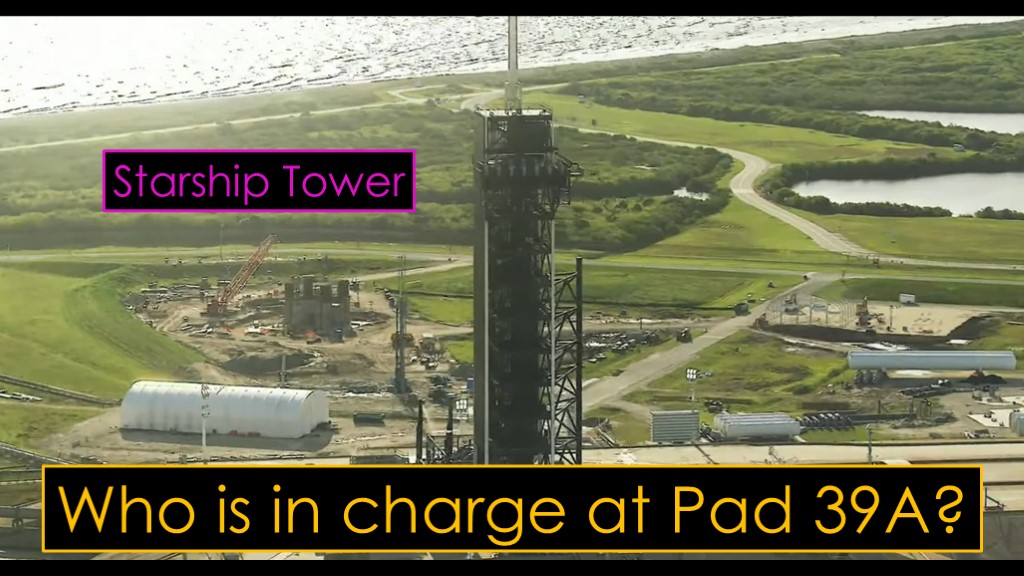
Then SpaceX started building a starship launch tower at 39A, and the role of the complex became more complex.
NASA has expressed concern that an explosion of Starship could damage the Falcon 9 launch infrastructure, which - until Starliner flies - is the only way of getting astronauts to and from the space station.
Different news outlets have viewed the situation differently, and I've seen lots of opinions. The opinion most often expressed is that NASA has told SpaceX that they can't do that. .
"Who is in charge Pad 39A?" Is it NASA or is it SpaceX?

The real answer is "it depends on what NASA and SpaceX agreed to when they signed the lease agreement". Without that agreement, all we have is speculation.
And here's the lease. I got it through a FOIA request that only took a single day, with the NASA response saying "that document is already public on our website - here's the link".
A link to an file that is - afaict - not indexed or linked anywhere is a strange definition of the word public, bringing to mind a section of the hitchhiker's guide to the galaxy, where Arthur Dent finds the plans to destroy the earth on display in the bottom of a locked filing cabinet stuck in a disused lavatory with a sign on the door saying 'Beware of the Leopard."
The full lease is linked in the description.
I *will* attempt to answer the question I posed, but I'm going to highlight some other parts of the lease along the way. Let's dive in.
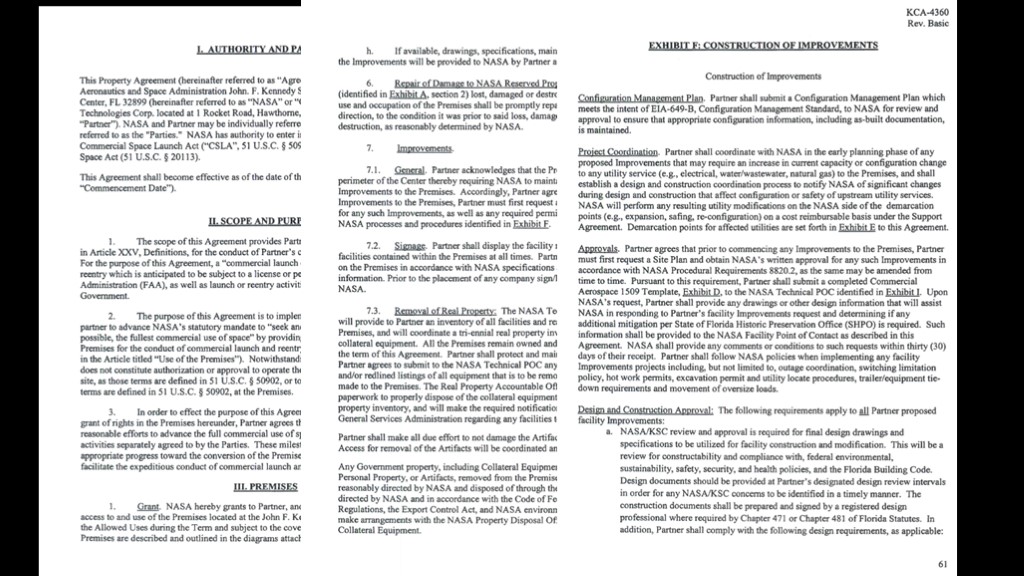
The lease consists of 67 pages of exciting legal verbiage. It's similar to apartment leases that I've signed in the past, and my guess is that it's pretty typical for a commercial lease. For example, NASA can enter the premises only during normal business hours after 48 hours of notice, except in cases of emergency. And there's a strict rule against keggers in the flame trench.
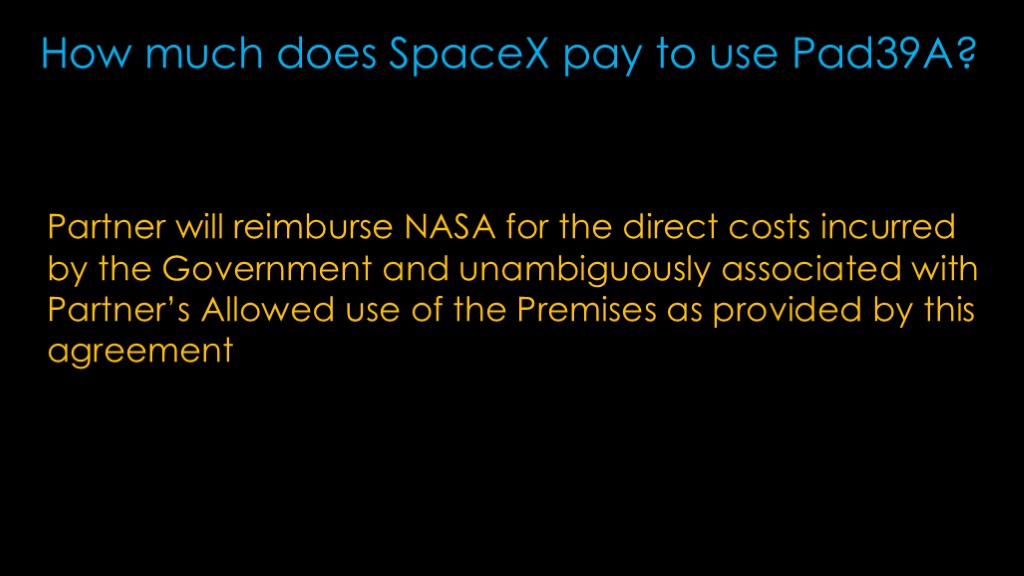
Before we get to the main question of who is in charge, I was wondering how much SpaceX is paying to use Pad39A every year.
Here's the answer - SpaceX reimburses the government for the costs that NASA incurs due to SpaceX using the premises.
SpaceX does have to carry a $1,000,000 in liability insurance, but it's very likely that they carry much more than that.

That seems like a rotten deal for NASA - they don't get anything extra from the lease of one of the premier launch pads in the world.
They do get a small fiscal benefit - they no longer need to spend $1.2 million per year maintaining the pad, but that is a small fraction of the amount they spend on ground systems.
The real reason why they do leases like this is that the Space Act of 2010 says the following:
Congress declares that the general welfare of the United States requires that the administration seek and encourage, to the maximum extent possible, the fullest commercial use of space.
That is the basic guideline and shows up verbatim in the lease.
There's an interesting question about how NASA has managed to skirt that language in the past, but that's another video.
With the retirement of shuttle and the expected flight rate of SLS, NASA did not need both pads in complex 39 and decided that they could encourage commercial use of space by leasing pad 39A.
NASA went with a "clean pad" design for pad 39B for the same reason, so that they could share it with commercial companies. Orbital ATK was planning to launch their OmegA vehicle there, but that was cancelled when Northrup Grumman bought Orbital ATK, and there are currently no commercial users of pad 39B
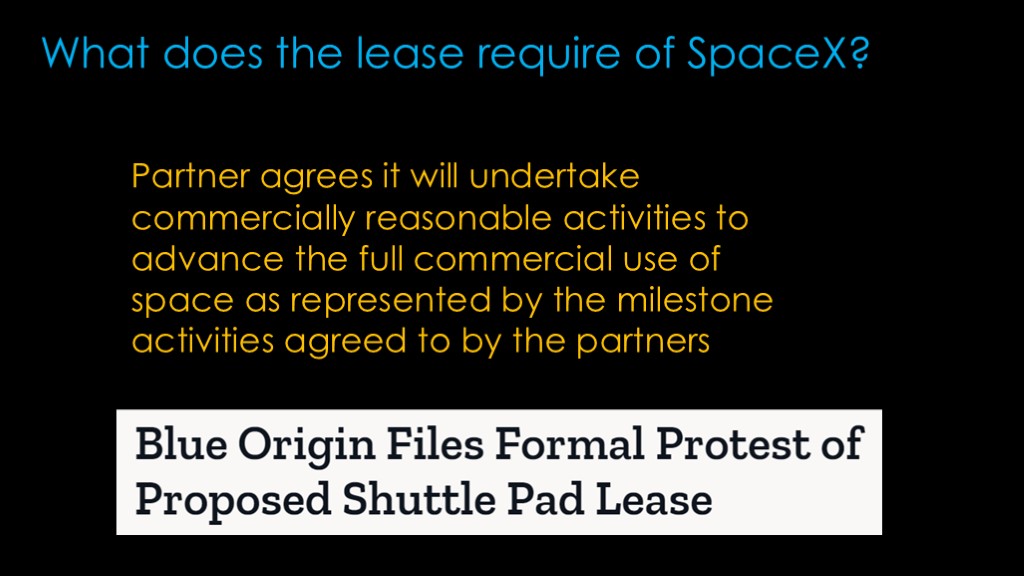
A requirement of the lease is that SpaceX actually uses it for commercial activities that align with the reason that NASA was leasing it in the first place. And they need to do it on a timely basis - the lease mentions "expeditious conduct of commercial launch and reentry activities on the premises"
This is likely one reason why SpaceX was chosen for the lease over Blue Origin - they simply had a plan to use the launch pad earlier. Blue Origin filed a formal protest which was denied by the government accountability office.
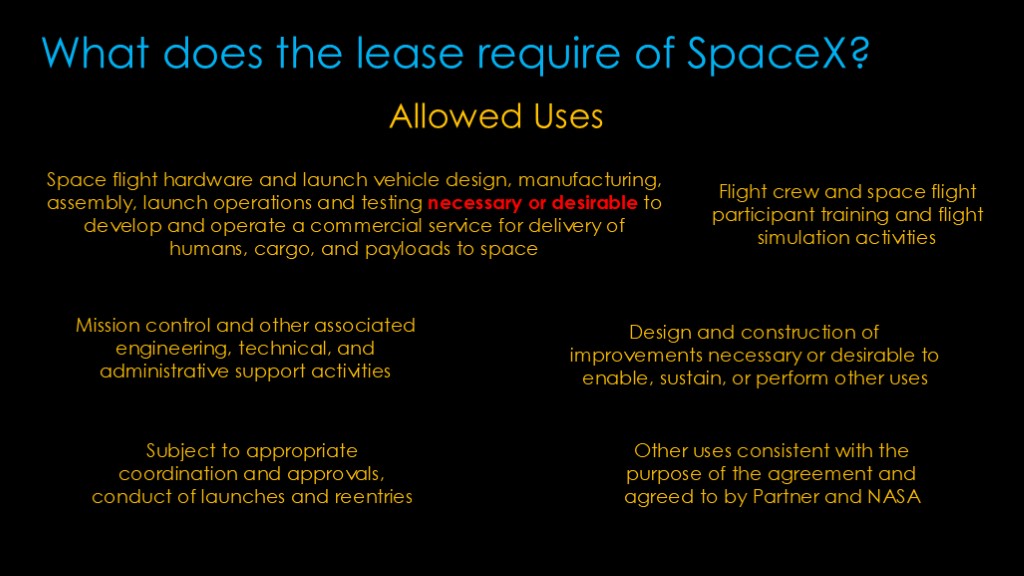
The lease contains a list of things that SpaceX can do with the site...
Design, manufacture and test hardware. I've highlighted the phrase "necessary or desirable". I am not a lawyer, but my interpretation is that this means that SpaceX gets to decide what uses they want to do, rather than having to meet some definition of "necessary".
They can do training of crew and participants.
They can run mission control and any other support activities
They can design and construct improvements, once again "necessary or desireable".
They can conduct launches and reentries. I'm not sure what "appropriate coordination and approvals means", but I think it means they need to have the usual FAA launch approvals and coordinate with NASA.
And if SpaceX and NASA agree, additional uses can be added to this list.
Note that there is no language here that gives NASA the power to decide what rockets will fly from this pad, and the lease does not mention Falcon 9 or Falcon Heavy by name.
Note that "kegger in the flame trench" is not an allowed use, though I guess it could fall under "administrative support activities".
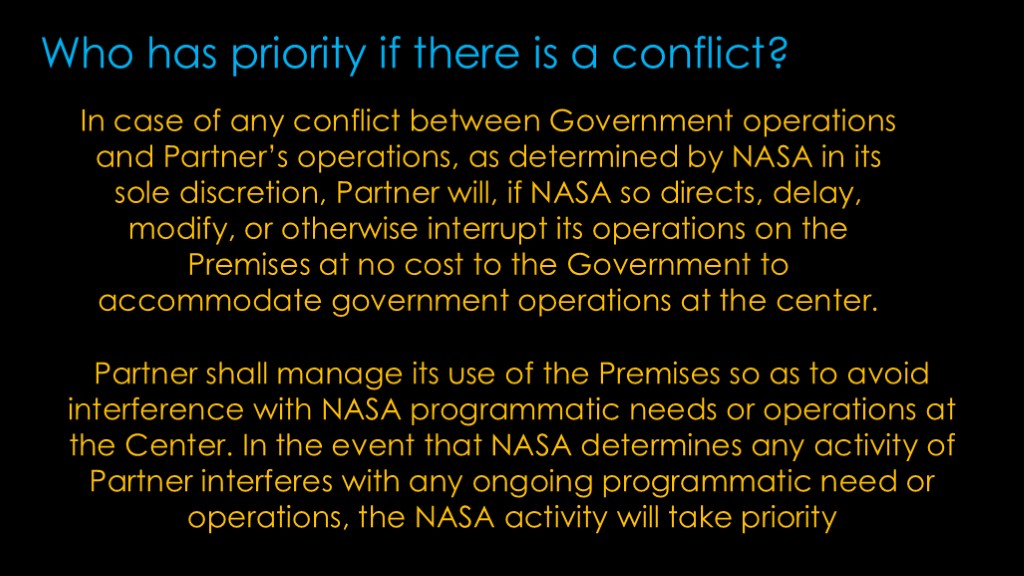
Who has priority if there is a conflict?
It's pretty clear that NASA gets priority if there is conflict in scheduling, assuming NASA *wants* priority, and SpaceX has to suck it up and deal with any ramifications of that.
In addition, SpaceX has to manage what it does to not get in the way of NASA's programmatic needs or operations.
My guess is that somebody is going to make the argument that commercial crew is a programmatic need and therefore SpaceX can't do anything that will get in the way of it, but I think that is a stretch. This section is not about allowed uses, it is about priority. It's about NASA saying "we need SpaceX to delay doing
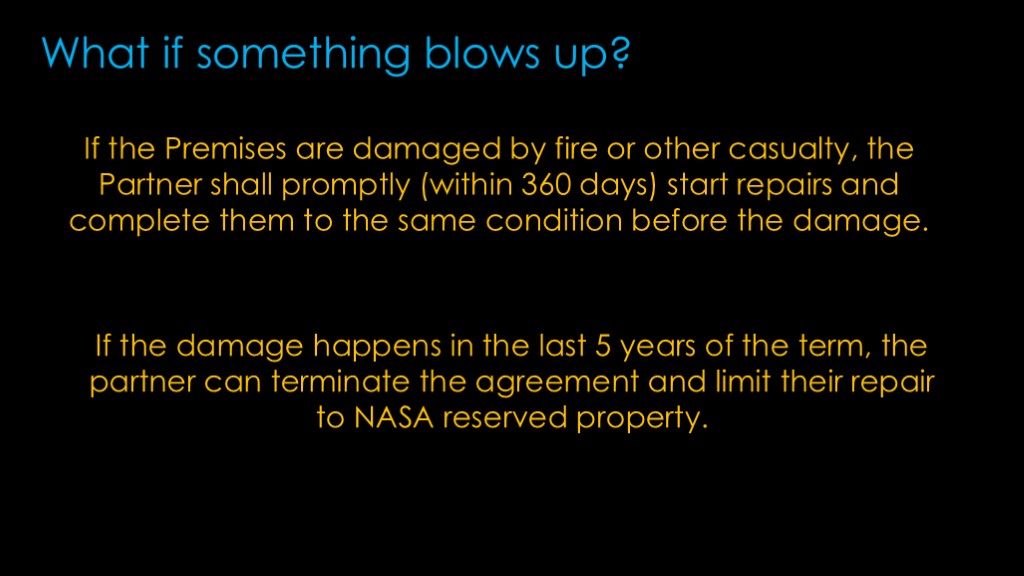
What if something blows up?
If the premises are damaged by fire or other casualty, SpaceX will need to rebuild them to the state before the damage.
However, if it's in the last 5 years of the agreement, SpaceX can terminate the lease and walk away, only repairing the NASA property that was damaged.
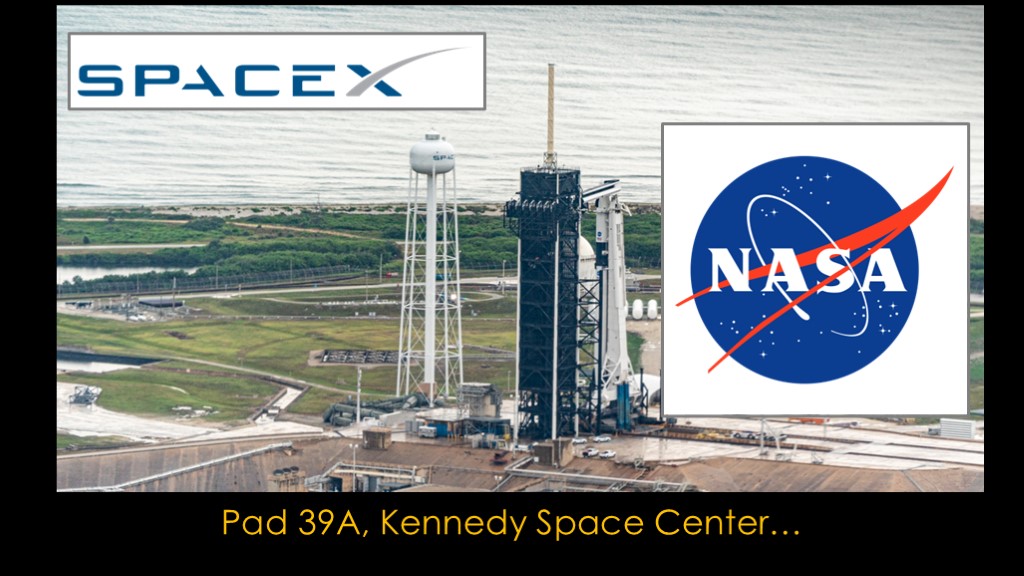
So, who is in charge of pad 39A?
SpaceX has pretty much complete control of what goes on there, subject to a lot of reasonable limitations you can read about if you'd like.
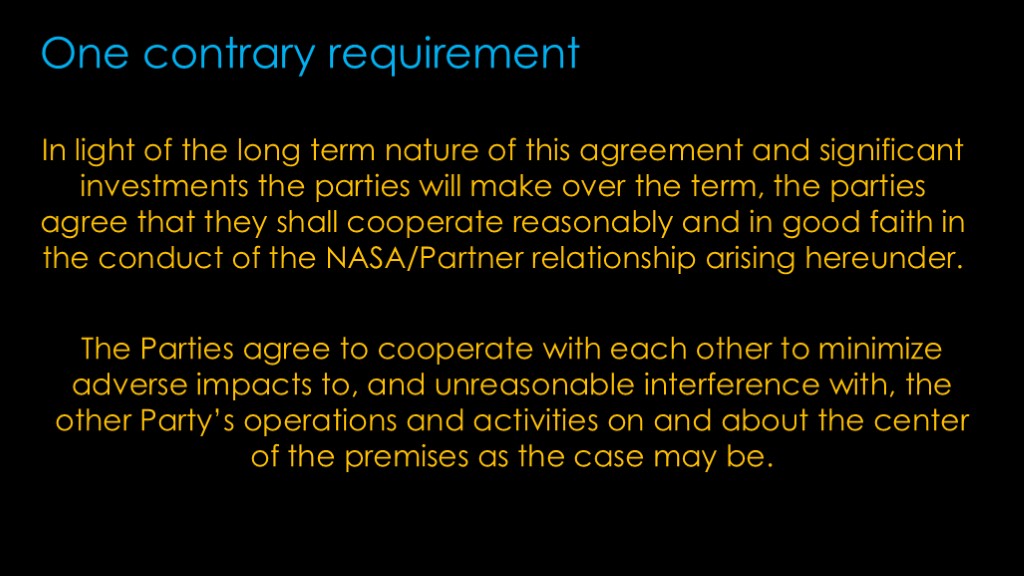
But it's not quite that simple...
There is a section on cooperation. The second paragraph basically says that NASA and SpaceX agree to try to not get in each other's way. A starship accident could certainly get in the way of commercial crew flights at 39A, and there is therefore an argument that this section compels SpaceX to move those flights.
But note that the language says a partner must minimize, not eliminate impacts or all interference. And I'm not sure that commercial crew is considered a NASA activity since SpaceX is contracted to provide crew transport. And remember that Starship is *also* a NASA activity because of the HLS tie-in.
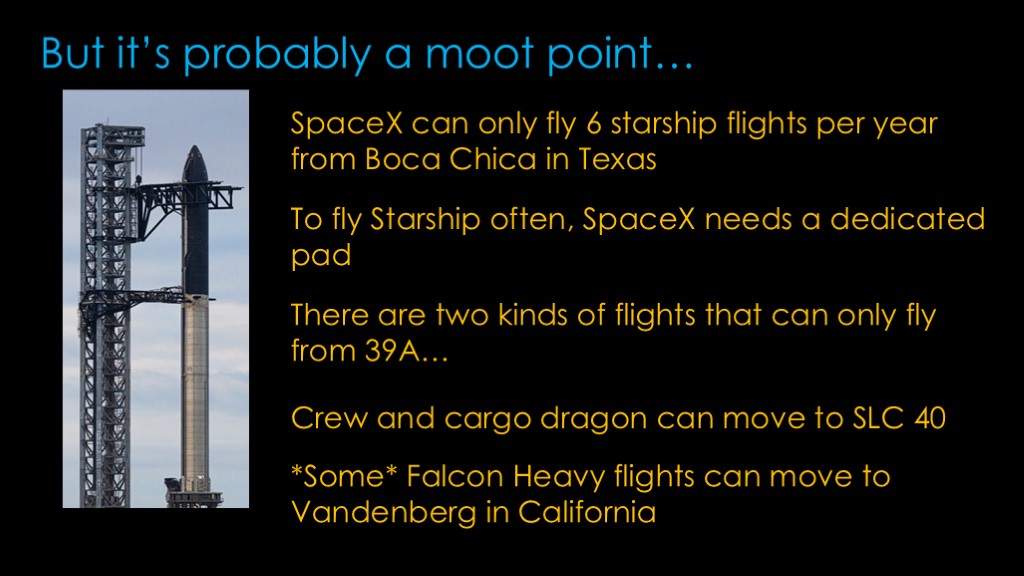
But it's probably a moot point...
SpaceX can only fly 6 starship flights per year from boca chica in Texas.
To fly starship often - and they want to fly it all the time - they simply must move as many Falcon flights as possible from pad 39A to other sites.
There are two kinds of flights that currently require 39A.
Crew and cargo dragon require the access arm that is only present at 39A, but those could move to space launch complex 40 on cape Canaveral air force station if SpaceX builds a crew access arm there, as they are said to be doing.
Second, falcon heavy flights are only supported at pad 39A, but some of those flights - those that are to the moon or planets - might be possible from the future falcon heavy launch location at Vandenberg in California. That would involve a slight reduction in delta v - about 400 meters per second - which might not be practical for some payloads.
Regardless, there aren't *that* many Falcon Heavy flights around, and obviously none involving crew.
Given SpaceX's starship flight goals, they need to deconflict pad 39A *anyway*, and that will eliminate the scenarios that NASA has expressed concern about.
And that's the story. SpaceX is in charge, but their interests are aligned with NASA's.

If you enjoyed this video, please write a two-page, single-spaced essay supporting the idea that "kegger in the flame trench" is an important administrative process.